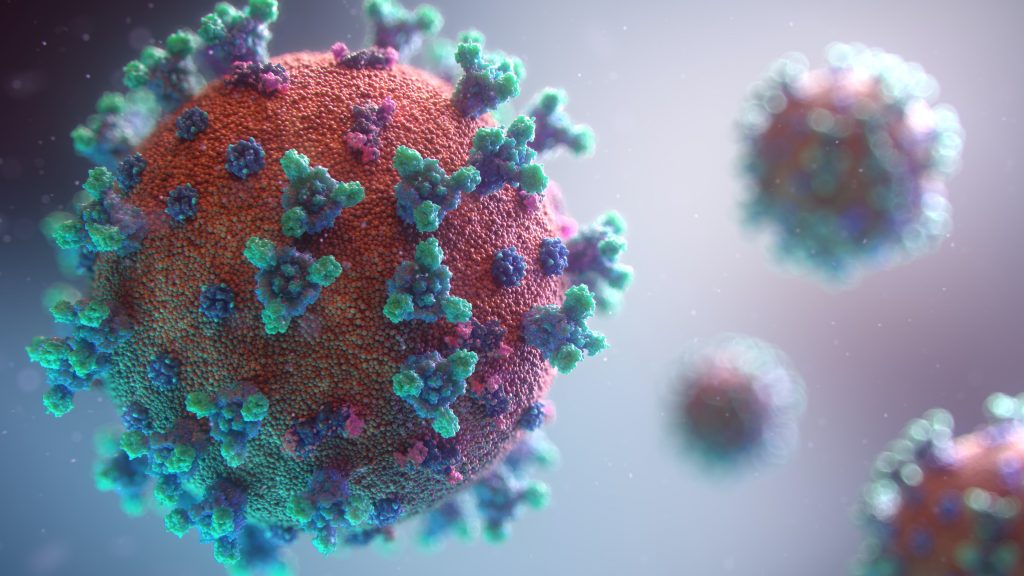When we think of a SARS-CoV-2 (COVID-19) infection, we first imagine people with respiratory problems or symptoms that resemble a flu. The truth is this virus also directly and indirectly attacks the central nervous system (CNS).
This pandemic can affect our health, even if we don’t catch the virus. Feelings of anguish, fear, uncertainty, isolation, and bereavement caused by our current situation may trigger psychiatric disorders in previously healthy people.
Dr. Celia Gonzalo Gleyzes – Neolife Medical Team
Central Nervous System (CNS) invasion mechanism (CNS) of COVID-19
The presence of angiotensin-converting enzyme 2 (ACE2) receptors may not be the only explanation of central nervous system tropism. There is evidence that axonal transport (through nerve fibers) may be responsible for spreading the virus.
Aerosol drops may cause the virus to reach the host’s nasal mucosa, subsequently gaining access to the central nervous system through the cribriform plate. Concomitantly, the virus passes into the bloodstream, which is an additional way to reach cerebral blood flow. Once in the central nervous system, the membrane-linked ACE2 receptor, which is ubiquitous and detectable also in the cerebral capillary endothelium, glial cells, and neurons, ensures that the CoVs (coronavirus) fuse with the surface of the cells through capsular proteins. Within days of infection, the coronavirus, which has spread, is detectable in the brain (and cerebrospinal fluid).

The sensory branches of the trigeminal and vagus nerves may also lead to the viral invasion of brain stem nuclei, and later even to the cerebellum.
Among the pathologies and symptoms produced by this invasion we may find: meningitis, encephalitis, headaches, dizziness, anosmia, deterioration of consciousness, psychiatric symptoms, and acute cerebrovascular diseases. However, the mechanism responsible for cerebrovascular diseases is probably different and does not require a direct viral invasion of the central nervous system. COVID-19 may cause cytokine storm syndrome which, together with an increase in D- dimer levels, low platelet levels, and hypoxia (inadequate oxygen supply), raises the risk of cerebrovascular events. The infected glial cells and neurons may also play an important role in tissue damage to the central nervous system, as they have in vitro properties that secrete inflammatory cytokines and therefore potentially perpetuate inflammation and cause long-term demyelination, edema, and neurological after effects.
Additionally, direct infection of cardiorespiratory centers in the central nervous system appears to contribute to respiratory failure and death in patients affected by SARS-CoV-2.
COVID 19 and depression: an interesting hypothesis
There is a relationship between mood changes and inflammatory cytokine levels, including tumor necrosis factor alpha (TNF alpha) and interleukins (IL-1 and IL-6). These cytokines would be responsible for inducing depression. The key lies in indoleamine 2,3-dioxygenase (IDO), an enzyme that degrades tryptophan, an essential amino acid needed for serotonin synthesis. Cytokines would be responsible for increasing IDO, causing a decrease in the neurotransmitter, serotonin.
Psychosocial environment and psychiatric disorders
It is difficult to identify the origin of the psychiatric disorders that are now highly prevalent due to COVID 19. They may occur due to the direct biological involvement of brain structures or due to problems associated with the pandemic (isolation, fear, preventive measures, loss of family members, change of working conditions, illness, etc.).
COVID-19 infection has been linked to new diagnoses of psychosis, mood disorders, post-traumatic stress syndrome, and suicide (up by 20-30%). Individuals who have been exposed to the virus have three times the risk of developing post-traumatic stress syndrome. Intense fear would be the most significant predictor for depression and post-traumatic stress syndrome.
What about those patients who already suffered a psychiatric disorder before COVID? It has been observed that 20.9%, according to some studies, has worsened and that eating disorders have also become more acute.
Higher levels of symptoms associated with obsessive-compulsive disorder (1,2) have been detected in healthcare workers.
Management of neurological and psychiatric disorders
The first thing to do would be to identify the type of disorder and seek out the right specialist (neurologist, psychiatrist, psychologist, etc.). The second would be to moderate social isolation (look for other communication alternatives), and the third, look for solutions (cognitive behavioral therapies, use of some supplements with 5-HTP (Neocalm), tryptophan, or drugs (anxiety medication and antidepressants).
BIBLIOGRAPHY
(1) Vindegaard N, Benros ME. COVID-19 pandemic and mental health consequences: Systematic review of the current evidence. Brain Behav Immun. 2020 Oct;89:531-542. doi: 10.1016/j.bbi.2020.05.048. Epub 2020 May 30. PMID: 32485289; PMCID: PMC7260522.
https://pubmed.ncbi.nlm.nih.gov/32485289/
(2) Orsini A, Corsi M, Santangelo A, Riva A, Peroni D, Foiadelli T, Savasta S, Striano P. Challenges and management of neurological and psychiatric manifestations in SARS-CoV-2 (COVID-19) patients. Neurol Sci. 2020 Sep;41(9):2353-2366. doi: 10.1007/s10072-020-04544-w. Epub 2020 Aug 6. PMID: 32767055; PMCID: PMC7410516.
https://pubmed.ncbi.nlm.nih.gov/32767055/

